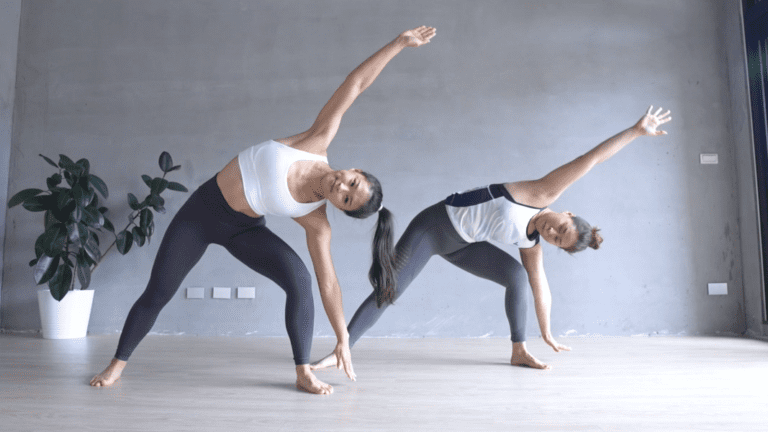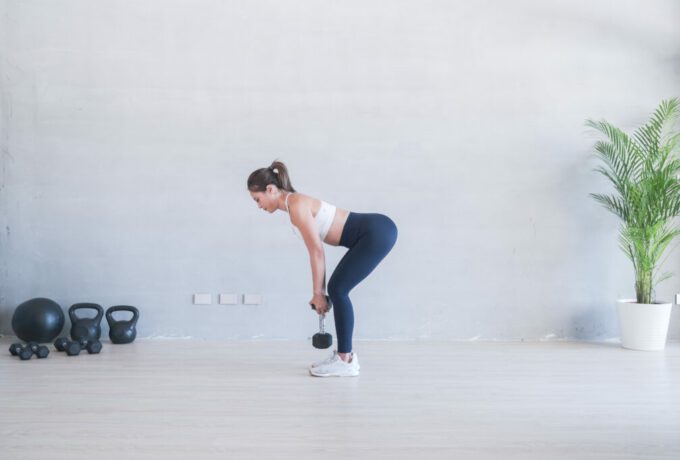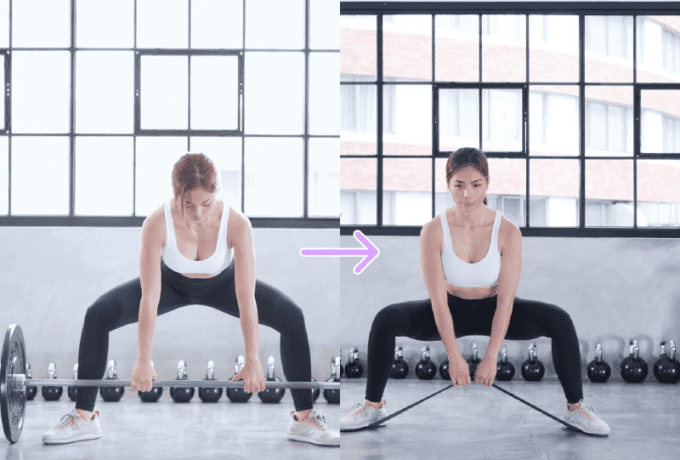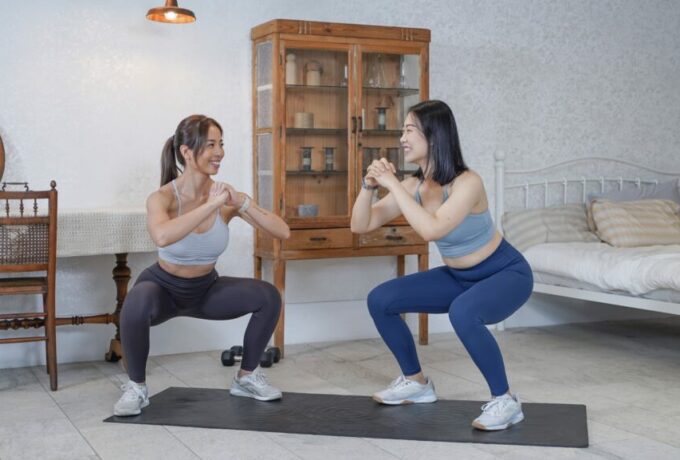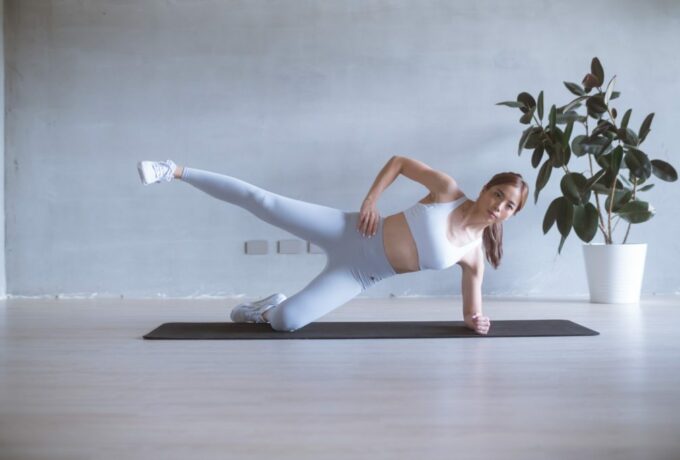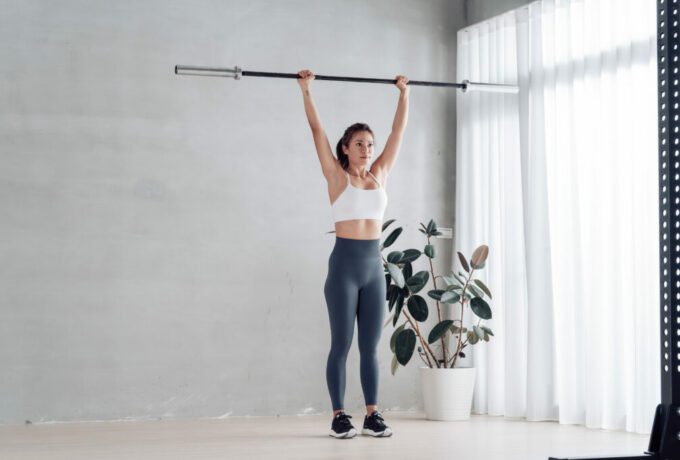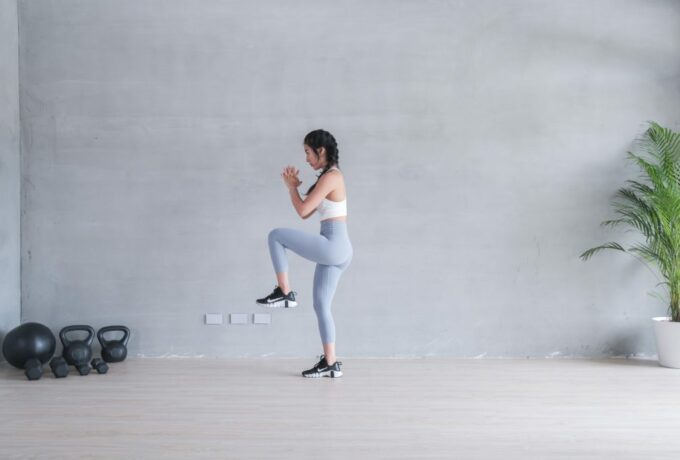Can you exercise when you have your period?
The answer is yes, girls can exercise during their period. However, it’s important to keep in mind that lutein and estrogen production decreases during menstruation, which can make the body more prone to certain symptoms such as edema, lower abdominal pain, poor skin tone, diarrhea, and irritability.
If you don’t experience obvious symptoms during your period, it’s okay to follow a training program. If you do experience menstrual pain, appropriate stretching or yoga can not only alleviate discomfort, but also help relax overly stiff muscles. After the peak of your period, you can gradually incorporate upper body training back into your routine.
Based on my experience teaching fitness classes, I recommend avoiding high-intensity core training during your period to avoid additional stimulation when the lower abdomen is swollen.
Contrary to common misconceptions, there is no need to take a week off from exercising just because your period is coming. It’s important to listen to your body and adjust your workouts as needed based on your individual symptoms and comfort levels.
If you experience stomach pain during your period, low-impact exercises such as walking, swimming, or cycling may be more suitable than high-impact activities like running or jumping. However, it’s important to consult with a healthcare provider if you experience severe or persistent pain or discomfort during exercise.
The answer is yes, girls can train during their physiological period, but how to arrange suitable training?
First of all, we must first understand the effect of female hormones on the body.
The four periods of female hormones
When menstruation comes (about 4~5 days)
The secretion of lutein and estrogen decreases, which can cause symptoms such as edema, lower abdominal pain, skin changes, diarrhea, and irritability.
After the menstrual period ends, the proliferative phase (about 10 days) begins
Female hormones gradually increase, and this is the most radiant time for women. Edema disappears, mood improves, and skin becomes more radiant.
Ovulation
The luteinizing hormone gradually rises, and some women may feel slight pain in their lower abdomen for 1-2 days during this period.
Luteal phase (secretory phase)
Women often experience premenstrual syndrome, which includes symptoms such as swelling, hunger, swollen nipples, irritability, acne, and other symptoms.
The hormonal changes and physiological reactions can be clearly seen in the graph above, which shows the difference between the swelling of the abdomen 10 days before and 1 day after menstruation. By understanding these changes, we can plan the most suitable exercise methods according to our body’s state at different times.

How to match the menstrual cycle and plan different fitness programs
Understanding the menstrual cycle and its effect on training
In 2017, a fascinating study was conducted on women’s menstrual cycle training. Participants were divided into two groups and both groups performed the same leg training regimen (same weight, number of sets, frequency, and movements) for four months. The only difference between the two groups was the timing of the training.
Group A: Trained during the week of menstruation and the first week after menstruation.
Group B: Trained during the third week and near the end of the period (luteal phase).
Which group had better training results? The study found that Group A had more effective results than Group B.
In other words, the experiment suggested that if you want to increase the weight and total number of training sessions, it’s best to do so during the week of your period and the first week after. Conversely, the luteal phase is more suitable for reduced training. However, the results of the study may not apply to all women. If you don’t experience menstrual pain, you can try the methods mentioned in the study to implement your training program.
If you suffer from menstrual pain, how should you organize your menstrual training program?
If you experience menstrual pain, it’s important to adjust your training program accordingly. Heavy weight training during this time may not be feasible, and you may need to take a break from exercising altogether. It’s important to remember that rest days are an essential part of any fitness program, and taking time off when needed is not a sign of weakness.
Instead of pushing yourself through pain and discomfort, you can try incorporating gentle exercises like stretching, yoga, or walking into your routine during your period. These activities can help relieve cramps, improve circulation, and reduce stress. As your period progresses and your symptoms improve, you can gradually increase the intensity of your workouts. Remember to listen to your body and adjust your training program based on how you feel.
When menstruation comes (about 4~5 days): arrange rest days, stretching training, yoga training
When menstruation arrives (about 4-5 days), it’s important to rest and focus on stretching and yoga exercises to alleviate any discomfort. After the peak of menstruation, upper body training can be introduced, but high-intensity core training should be avoided to prevent additional stimulation of the swollen lower abdomen. For example, a personal yoga training schedule during menstruation could include a high or medium intensity class, with a focus on avoiding core training. On the third or fourth day after the period ends, non-cardio plyometrics can be added to warm up for intense workouts.
After the menstrual period, we entered the hypertrophy period (about 10 days): training from the lower extremities, high-intensity training schedule
The following 10-day hypertrophy period is the best time to focus on lower body training, as the body has been resting for a week. Using large weights and low sets can effectively stimulate muscles. It’s important to start resuming the normal training schedule until the next menstrual cycle arrives. Additionally, some people may increase their aerobic training frequency during the luteal phase to reduce edema.
It’s crucial to listen to your body and adjust your training program according to your physical condition. Don’t blame yourself for taking a few days off – rest is essential for progress and recovery.
Dietary advice during the menstrual period
When it comes to diet, we can adjust our eating habits according to our menstrual cycle.
Week of menstruation and the first week after
During this period, due to lower levels of luteinizing hormone, our appetite is usually affected. Therefore, we should maintain a strict diet control during this time, which can help us adapt more quickly both physiologically and psychologically. This is a good time to focus on losing fat. However, it’s important to note that during menstruation, our body fat and body weight may be slightly higher, so it’s not recommended to measure body fat during this time.
Week before the period
During the luteal phase, our body is more likely to feel hungry, especially for sweets and junk food. Therefore, it may be a bit difficult to lower calorie intake during this time. However, this is not a reason to abandon your diet. If you’re starting a new diet, it’s recommended to avoid starting the week before your period.
So how can I avoid eating indiscriminately during the luteal phase to blow up the calories?
To avoid overeating during the luteal phase, my recommendation is to increase your total caloric intake with foods that have nutritional value, such as good quality protein and low-calorie foods that provide a sense of satiety. During the week of your period and the week after, you should maintain a stricter diet, but it’s okay to slightly increase your caloric intake during the last two weeks of your cycle. Instead of being overly focused on daily calorie intake, it can be helpful to view your intake on a weekly or monthly basis.
To match your menstrual period, here’s a reference number of protein intake:
- The week of your period and the first week after your period: aim for a daily protein intake of at least 100 grams for every 50 kg of body weight x 2. For example, if your body weight is 50 kg, aim for 100 grams of protein daily.
- The week before your period: you can take at least BW(kg) x 2.3~2.7 to increase your feeling of fullness. For example, for a body weight of 50 kg, aim for 115-135 grams of protein daily.
Remember to pay attention to how your body feels and adjust your diet and training program accordingly.

